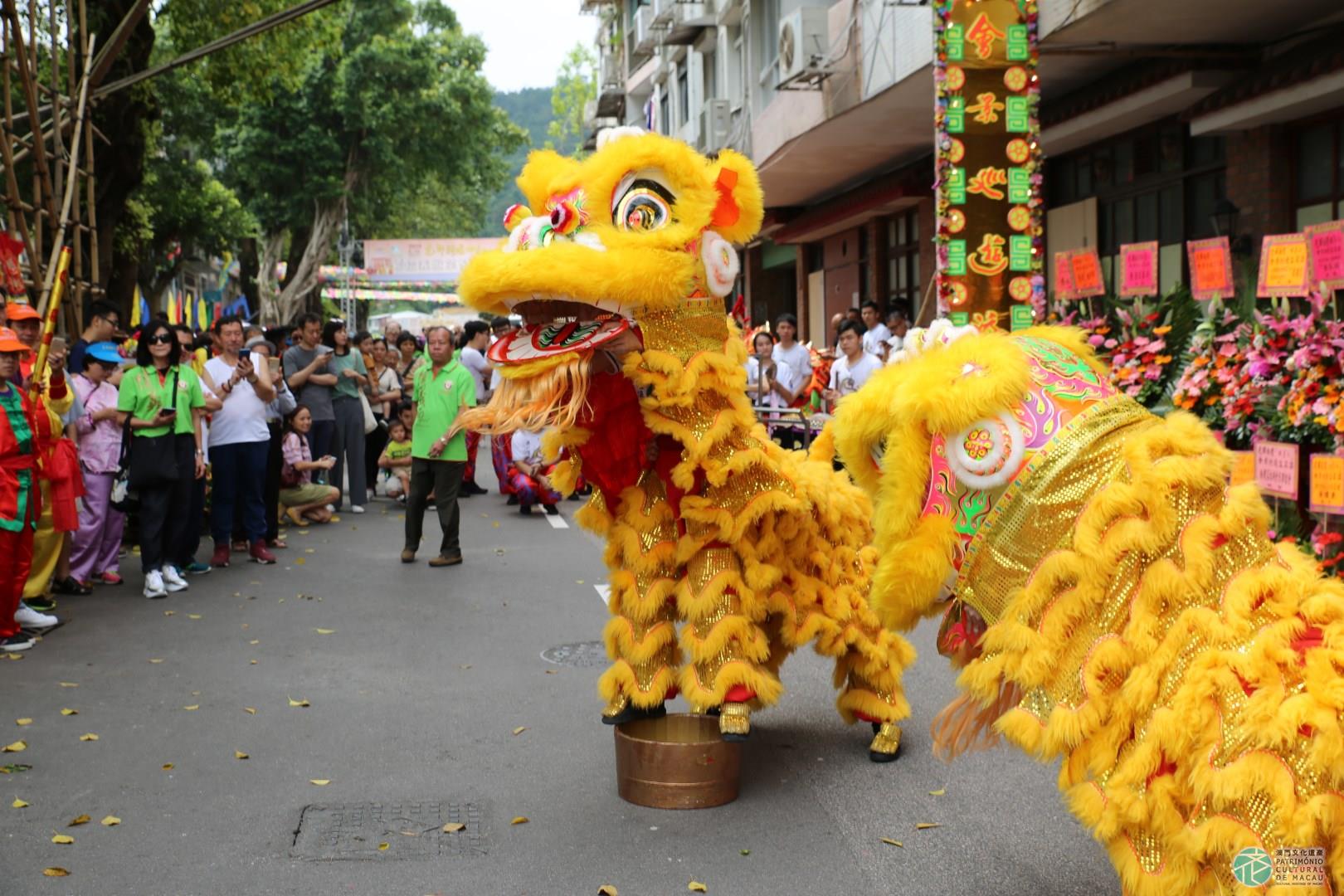Introduction:
The lion is an auspicious symbol in traditional Chinese culture. The lion dance is a traditional Chinese folk activity that has been passed from generation to generation. Usually, it’s performed during temple fairs and celebrations, wedding ceremonies and folk festivals, to drive away evil spirits and create an atmosphere of liveliness and festivity, sometimes even being present during funerals. Macao’s lion dance tradition has its origins in the Lingnan culture, where the Southern Lion is predominant. It is a performing art that incorporates martial arts, dance and music. In a lion dance, the lion is composed of a head and a furry body and is operated by two dancers to the beat of gongs and drums to move in a variety of forms. Lion dance movements feature the horse stance, including the “opening of the eyes”, “cleaning the beards”, “licking the body” and “shaking the fur”. The tricks involved in the lion dance can range from the so-called “Choy Cheng” (plucking the greens), “drinking water from a raised platform”, the moment when “the lion spits out a ball” and the so-called “walking on Meihuazhuang” (walking on poles of plum blossoms), among which the “Choy Cheng” is the most representative and significant of the lion dance, involving complex movements, such as the opening of the mouth, rotating around an object, changing position and concluding with poses that are accompanied by dramatic and narrative effects.
Conservation Status:
Macao’s lion dance tradition has been carried forward by civil sports societies. Originally, lion dances were performed in different types of celebrations and they were the main sources of income for sports societies. In the second half of the 20th century, the lion dance gradually developed into a competitive sport event, and the Macao representative team repeatedly achieved good results in international competitions. Nowadays, this activity has already become one of Macao’s characteristic sport events.
Heritage Value:
The lion dance has remained one of the favorite performances, most often seen in local folk festivals and celebrations. It is usually performed to ask for safety and auspiciousness, thereby involving profound historical and cultural significance. As an important sign of the rich traditional Chinese folk culture of Macao, it also has significant value for folk culture research. As it keeps evolving in its transmission and in the development that it has had in local communities, it also plays a crucial role in carrying forward the traditional Chinese culture in the international sports arena and promoting cultural exchange and dialogue, as one of Macao’s significant sport events.









